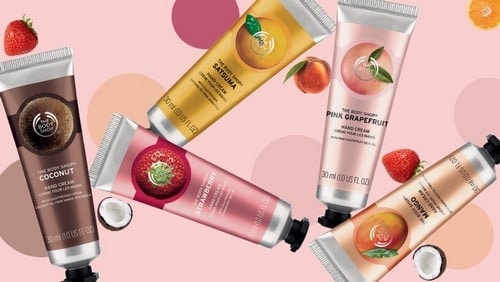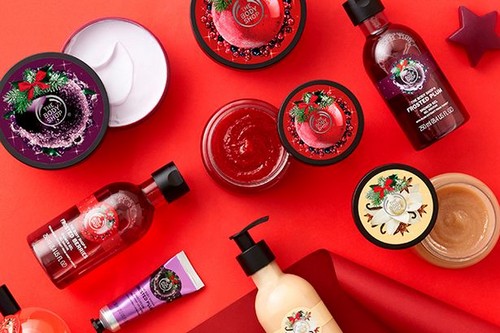The Body Shop is a British skincare, perfume, and cosmetics company and was founded in the year 1976 by Dame Anita Roddick. She started the company from a small shop in Brighton with only 25 products and now the company has grown to be worth £800 million and is present in nearly 66 countries.
The Body Shop has a range of 1000 products and sells over 3000 plus franchised and owned stores. The company is currently owned by a Brazilian cosmetic company called Natura. Initially, it was owned by L’Oréal between the year 2006 and 2017.
It was then sold to Nature on June 2017, at £880 million. Natura Cosmetics believes in cruelty-free products where no animals are harmed while making the products. It uses fresh and sustainable ingredients and has found alternative technologies for testing on animals.
Table of Contents
Segmentation targeting and positioning in the Marketing strategy of The Body Shop :
Segmentation :
Under demographic segmentation, The Body Shop has targeted mostly women. They have recently developed products for men as well. The market has been segmented according to the different occupation like the teens, working adults, and housewives, who are between ages 15-60-year-old. Looking at the price range of the products, the high or middle-high income buy the brand’s products.
Discover the latest developments in The Body Shop’s growth strategy.
The Body Shop expanded its global footprint by opening 150 new stores in 2023, bringing the total number of outlets to over 3,200 worldwide. This expansion primarily targeted emerging markets in Asia and Africa, aligning with the company’s strategy to reach a broader, more diverse customer base. (Source: Natura & Co Annual Report 2023)
Additionally, The Body Shop has seen a 20% increase in online sales this year, driven by enhanced digital marketing efforts and a user-friendly e-commerce platform. This growth underscores the brand’s successful adaptation to changing consumer behaviors and the increasing importance of online retail in the beauty industry. (Source: Digital Commerce 360, 2023)
Targeting :
The Body Shop has efficiently targeted its market, especially for women who work and want to look attractive in the workplace. Even those women who want to prevent their skin from getting dry in an air-conditioned room. It provides women series of product ranges that products the firmness and elasticity of the skin preventing the fine lines on the face.
Positioning :
People are looking forward to maintaining a healthy lifestyle and use organic products on their skin. The Body Shop has been positioned strategically to meet these requirements. They meet the customer’s need for a healthy lifestyle by using all natural and organic ingredients like seaweed, sugarcane, aloe vera, honey, tea tree, etc. The brand puts forward the environmental concern and also campaigns against animal testing of the products. It is one of the very few cosmetic companies that promote health more than glamour and this is a very unique positioning strategy.
Mission: To dedicate our business to the pursuit of social and environmental change. To creatively balance the financial and human needs of our stakeholder’s employees, franchisees, customers, suppliers, and shareholders.
Vision: The business of business should not just be about the money, it should be about the public good. Not private greed.
Tagline: ‘Enrich Not Exploit’
Competitive advantage in the Marketing strategy of The Body Shop
Brand image
The Body Shop brand is seen as a trustworthy brand that makes products of great quality. The added advantage is that the products have a compelling, natural and ethical message behind the branding of the products.
This is how The Body Shop differentiates itself from another brand of beauty products. When a brand takes initiatives for a cause, it increases consumer’s affinity towards the brand. According to research 835 of the consumers are more likely to buy a product that takes environmental and social issues seriously.
Strong Advertising and Marketing
To show the consumers the impact of every pound they spent on The Body Shop product, they would show one square meter of faux-grass on the checkpoint to help the consumers visualize what they are helping to build.
The brand makes the strong promotion of corporate social responsibility and strong advertising strategies to position itself as a green company.
Brand Campaigns
The Body Shop is able to build a strong base of loyal consumers with the help of the products that the brand offers to them. The products are based out of natural ingredients.
Their campaign to “ Enrich and Not Exploit” has become quite popular. They aim to enrich all their people, products and the planet. They intend to work closely with the farmers and suppliers and also being firmly against animal testing.
BCG matrix in the Marketing strategy of The Body Shop :
Body Shop belongs to Natura & Co which is Brazilian marketer and manufacturer of beauty products. It is the largest Brazilian cosmetic brand by revenue.
The major brands it owns are The Body Shop, Natura Cosmetics, and Aesop. For the company, the Body Shop comes falls in the star category. The Body Shop is going extremely well in the market and the possibility of growth is also very high. Natura & Co has made huge investments in advertising and building of the brand. In 2017, Natura and Co claimed to have double-digit in growth due to The Body Shop.
The Body Shop’s performance was good and is expected to grow at a similar pace in 2019. Due to the huge potential of the product, The Body Shop is in the star category of the BCG matrix.
Distribution Strategy of The Body Shop :
The brand now consists of more than 300 product ranges and has more than 2500 stores worldwide. It is a global business that has over 3000 stores in more than 60 countries and employs more than 22,000 people worldwide.
Its international presence includes Japan, Korea, India, Hungary, Finland, Portugal, Finland, and Bangladesh. The brand uses multilevel marketing channel called “The Body Shop at home” which had distributors and consultants recruit people to sell and market its product and this was successfully implemented in countries like Australia, France, South Korea, etc.
The brand ensures that each of the regions that sell the products is responsible for the forecasting of the stocks There is three key distribution broad, alternative and prestige.
Prestige is the department stores and specialty stores. Broad are the drug stores, warehouse clubs, and cosmetic discounters. The alternative includes channels like direct sales, direct mail and also has an online channel for selling of the products.
Brand equity of The Body Shop:
The brand has five core values and they are supported for community trade, animal testing, activated self-esteem, protect the planet and defend human rights.
The loyal consumers convey that they choose The Body Shop because of the brand’s stand for the environment and social issues. The mental associations held by the consumers about the brand has added to the perceived value of their products.
The has brand successfully changed consumer’s perception about what to look for in consumer products and it is more than the glamorous image and expensive advertisements and more about natural ingredients and healthy products.
Competitive analysis in the Marketing strategy of The Body Shop :
The main competitor of The Body Shop is Yves Rocher, Lush, Weleda, and L’Occitane. These are the brand’s direct competitors because they run in the same markets The Body Shop does and also has a focus on environmental protection and the use of natural ingredients in their products.
Maybelline New York is not a direct competitor but is a threat to The Body Shop because they have started to position itself for environmental protection and against animal testing. Body Shop must find a point of differentiation from these brands to ensure brand loyalty.
Customer analysis of The Body Shop :
The Body Shop has a range of customers who are both men and women. The brand initially didn’t have products for men but now the focus has also been on men who are now taking care of their skin and are looking to have a comfortable bath. The brand’s main target, however, is the women between the ages 20-55 years.
According to the brand, they found that 64% of their consumers are ready to pay for a more ethical product. They also found that 83% of their consumers likely chose the retailers that took environmental and social issues seriously. It was also found that the consumers who use The Body Shop products found it very compelling The Body Shop had a strong brand image associated with its beauty products.
Promotion Strategy of The Body Shop:
The Body Shop aims to change the way beauty products are created. It just launched “Forever against Animal Testing” campaign and will be running for two years with the consistent content for two years until 2019. It teamed up with “Game OF Thrones” star Maisie Williams and number of influencers on social media for this campaign.
The whole campaign will be run consistently for two years to ensure that it creates a global impact. The message will be put out on YouTube, blogs, and even on stores to make sure the message doesn’t go unnoticed.
The brand promotes its products and campaigns through a lot of video, social media and in-store content and less focus is put on marketing via TV. The brand is testing channels like Instagram, Pinterest, and Snapchat and they seem to be working extremely well for the target market who are under 35 years old
Liked this post? Check out the complete series on Strategies



very helpful. thank you